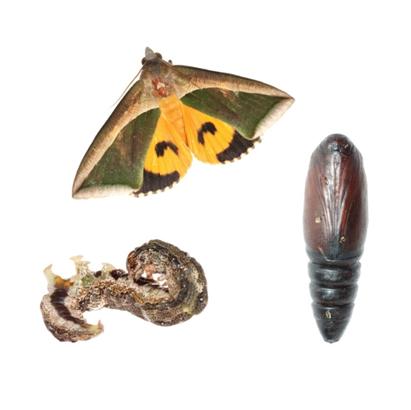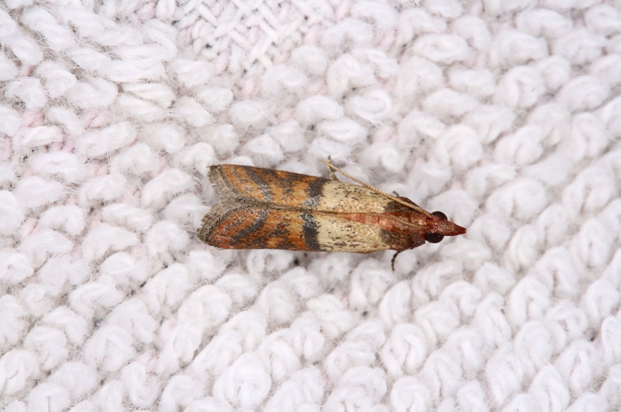Don’t Let Clothes Moths Ruin Your Holiday Season
When the cold of winter hits, there’s nothing as satisfying as pulling out your warm wool sweater and socks and sitting by the fire with a cup of hot cocoa and a good book. But this year you notice something peculiar: your stored clothes are covered in holes!

Moth larvae have long been known to feed on clothes that are left in storage for long periods of time, especially those made of natural fibers such as wool and cotton. For many people, the only effective solution to their moth problem is to use moth balls or other chemical-based solutions and hope the pesky creatures will eventually go away.
Fortunately, there are natural and non-toxic solutions to preventing and treating moths in your home, which eliminate the need of harmful chemicals and don’t jeopardize the health and safety of your family. If you noticed moths have destroyed your favorite winter clothes this year, or you want to prevent them from becoming a problem in the future, use the following guide on how to spot, treat and prevent these nuisance pests.
Identification
The tricky thing about clothing moths is they are very difficult to spot and identify. People usually only notice an infestation once the damage has been done and their favorite winter clothes have been destroyed beyond repair. The good news is that, with a keen eye and knowledge of what to look for, you can learn to recognize the telltale signs of an infestation and prevent future invasions.
First, some useful facts. The moth lifecycle consists of four stages: egg, larva, pupa, and adult. In a heated home, female moths may lay eggs anytime of the year, so at any given time, you are likely to find moths of all stages of life in your home. In order to detect their presence – and thoroughly eliminate all potential sources of infestation, you must be on the lookout for all stages of a moth’s lifecycle, and not just the easily-recognizable adult moths.

Contrary to popular belief, it is in fact the moth larvae that do the most damage to clothing and not the drab-colored butterflies we see flying around. Whenever you find your sweaters peppered with holes but no winged creatures to take it out on, look closer – it’s the larvae doing all the damage. By catching moths at this stage, you can be sure they won’t be seeing the light of day and give birth to new generations of clothes eaters.
The final and most important step to detecting clothes moths in your home is to perform regular inspections of known problem areas. Check your closets, attics, and garage routinely for all stages of the moth life cycle. Adult moths will typically be orange and red in color with golden-yellow wings. The larvae will feed within flimsy white silken tubes and leave behind silken webbing and cylindrical cases near areas where they feed. If anything looks suspicious, don’t hesitate to have the room treated for moths before it’s too late.
Prevention
Moth infestations are much easier to prevent than treat, and proactive treatments can save you the headache and money of replacing clothes and disinfecting the house. The best way to prevent clothes moths is to periodically clean the areas where moths are known to reproduce and feed. These include rarely-cleaned areas like beneath heavy furniture, along baseboards and cracks, and in seldom-used storage closets. Using a vacuum, thoroughly clean each of these areas on a regular basis, also performing a thorough inspection of the clothes during the process. This will help treat the early stages of infestation before it turns into a bigger problem.
Another way to protect your clothes is to store them in airtight bags and containers. If you have clothing items that only come out of storage a few times a year, taking the time to store them properly will go a great way to reduce an infestation from occurring. You should also brush clothing items that are left in storage from time to time, as the brushing will damage any eggs that may be present and expose the larvae to ease in their removal.
Treatment
Many times people reach for moth balls or other chemical-based solutions to treat a moth infestation in their home. The problem is these treatments rely heavily on the use of toxic chemicals, which can be hazardous to your family’s and pets’ health. Instead, consider resorting to natural moth repellents and treatment options, which can be just as effective as chemical-based treatments, but without the enduring effects on your health or the environment.
The most effective natural solution to kill all phases of the moth’s life cycle is to launder infested items at higher temperatures. Wash your clothes at 120 degrees for 20 to 30 minutes to ensure all moths, larvae, and eggs are killed. For your nicer garments that require special treatment, go to your local dry cleaners and have them professionally cleaned. This will eliminate all traces of the moth and prevent future infestations from happening in your home.
You can also consider freezing items to treat them for moths. The process is simple and easy: place the infested items in a sealed plastic bag and put it in your freezer for several days, at temperatures lower than 18 degrees. This will ensure all stages of the moth’s life cycle are treated, but be careful not to damage your clothes in the process.
If you still aren’t sure you have managed to defeat moths after all these treatments, there are a variety of eco-friendly moth traps that can help in the detection and treatment process. For your peace of mind, place these traps in the same high-traffic areas that moths frequent and make sure your house will remain safe and pest-free. Check the traps often and perform the aforementioned treatments if any signs of their presence are discovered.
Although you may notice clothing moths only during the cold season, the fact is that moths can infest your home any time of year. Maintaining a regular schedule of checking stored clothes in your closet and attic will help prevent an infestation from occurring. If you notice any signs of moth infestation, contact an authorized pest control company and let them handle the problem professionally. A team of certified specialists will not only ensure the safe and effective removal of the moths, but will inform and instruct you on how to prevent them from returning in the future.
About the Author:
Daniel Mackie, owner of Greenleaf Pest Control, is a Toronto pest control expert well-known as an industry go-to guy, an innovator of safe, effective pest control solutions, and is a regular guest on HGTV. Mackie, along with business partner Sandy Costa, were the first pest control professionals in Canada to use detection dogs and thermal remediation for the successful eradication of bed bugs. In his free time, he is an avid gardener.




You must be logged in to post a comment.